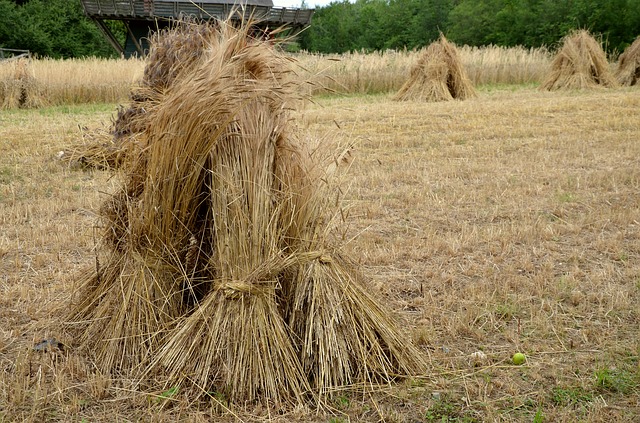
The sheaf is a bundle that was made after mowing
The etymology of sheaf is unclear. According to what is suggested by the Royal Spanish Academy ( RAE ) in its dictionary, the term could come from the Latin cavella , in turn derived from cavus (a word that translates as “hole between the hands” ).
Bundling of herbs
A sheaf is a set of grasses , branches , reeds or similar elements. The sheaf is smaller than a sheaf , but larger than a bunch .
Sheaves, bundles and bundles, therefore, are groupings or bundles of crops, shoots and other natural objects . The act that consists of the development of sheaves is known as sheafing .
The sheaving action used to be carried out after the manual mowing process in crops of barley , wheat and other cereals . First, in this way, the harvesting was carried out and then the sheaves were formed so that the cereal matured and contributed to accelerating the drying of the grain. Finally the sheaves were taken to the threshing floors.
Impact of technology
The development of sheaves changed with the mechanization of harvesting , which emerged in the middle of the 19th century . These reapers made the harvest fall on the platform of the machine , then a rake was used and only then was the sheaf formed.
The next technological innovation was the appearance of binding machines . In this way, a machine began to be responsible for tying the harvest to form the sheaves, leaving only stacking as a manual task. With the development of combine harvesters in the 20th century , forming sheaves was no longer necessary.
It should be noted that before the arrival of the combine, when this work still consisted of mowing, sheaving, baling and threshing, the sheaves were left to dry naturally on the stubble, and some waited for them to mature. In this way, the time needed to complete the work was longer. The harvester, on the other hand, gave rise to the creation of grain dryers , so that in addition to the loss of labor, the "natural" nature of the process was also reduced.
in the kitchen
It is possible to find several dishes that have the word sheaf in their name. For example, we have sheaves of wild asparagus , belonging to the cuisine of Spain. This recipe includes the following ingredients to be made following its traditional preparation, taking into account a quantity for four people:
* wild asparagus (24);
* lactose-free bacon (4 slices);
* wheat flour;
* previously chilled water;
* salt;
* olive oil;
* ketchup;
* ajoblanco, a cold soup well known in Andalusia and Extremadura (500 ml);
* gelatin sheets (8).

The sheaf of wild asparagus is a traditional Spanish recipe
Note that these last two ingredients are used to prepare the ajoblanco gelatin . We must start by peeling and washing the asparagus, then blanch them until they soften, drain them and let them cool. Each sheaf consists of six asparagus, which are surrounded with a slice of bacon, adjusting it with a wooden toothpick. The batter is prepared by mixing the flour with the water until you get a relatively light dough (don't forget the salt).
Each sheaf is passed through this mixture and, after draining it, it is fried until golden brown. For the gelativa, the soup is heated over low heat, the sheets (previously hydrated) are added and they are dissolved using a rod. It is important that it does not reach a boil. It is removed so that its temperature is reduced, placed in a low-sided dish and left in the refrigerator until it sets. Finally, cut the ajoblanco into portions with the desired shape and serve one for each sheaf plate, accompanying with ketchup.
